
Copernical Team
Buzz Aldrin's famous 1969 moon walk picture sells at auction

More than 70 original NASA photographs including a celebrated image of Buzz Aldrin's moon walk taken by Neil Armstrong were sold at auction in Copenhagen on Wednesday for more than 155,000 euros ($172,000).
The Aldrin image, which fetched 5,373 euros, shows the astronaut on the surface of the moon in July 1969 during the first manned lunar landing. It was famously used on the cover of LIFE magazine.
Armstrong, the first man to step onto the Moon, can be seen in the reflection of Aldrin's visor.
A total of 74 NASA photographs were put up for sale including 26 taken on the Moon during the Apollo missions in the 1960s and 1970s.
Finding moons' hidden oceans with induced magnetic fields
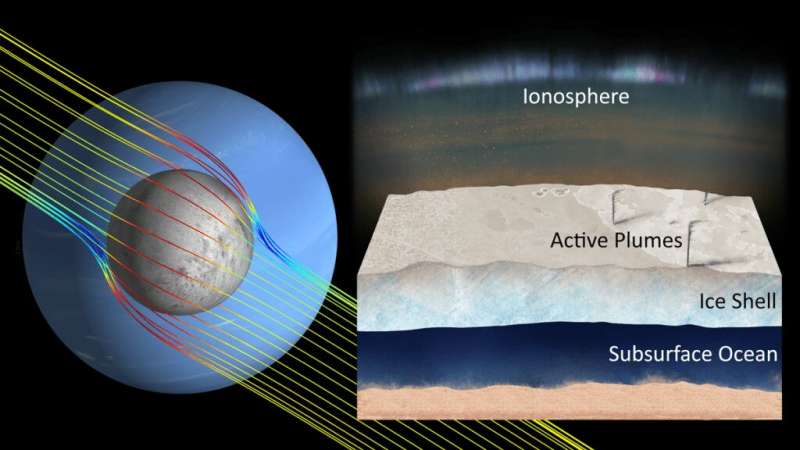
In the 21st century, planetary scientists have become increasingly aware that subsurface oceans consisting of liquid water exist within objects throughout the solar system. Because water is a universal requirement for life on Earth, these bodies—mostly moons—are enticing targets in the search for extraterrestrial life.
A primary way of deducing the existence of an unseen ocean is through an induced magnetic field. These fields originate from a unique application of Faraday's law of induction, which states that a time-varying magnetic field creates an electric current when applied to a circuit. Water that is salty enough to remain liquid in cold space environments is very conductive; at the same time, a moon's orbit through a planet's rotating magnetic field exposes the moon to a field strength that varies with time.
How to talk to extraterrestrials
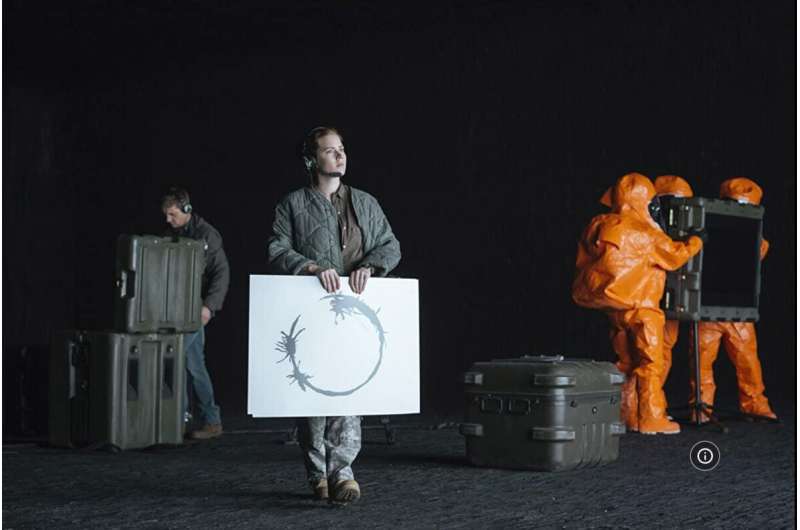
In Steven Spielberg's 1977 film "Close Encounters of the Third Kind," extraterrestrials communicate with humans through a catchy five-note sequence. In Spielberg's 1982 blockbuster "E.T.," a diminutive alien learns basic English from a children's TV show. More recently, in 2016's "Arrival," squid-like visitors use pictograms to make themselves understood to American scientists wielding whiteboards with words.
Team chosen to be first to make oxygen on the moon
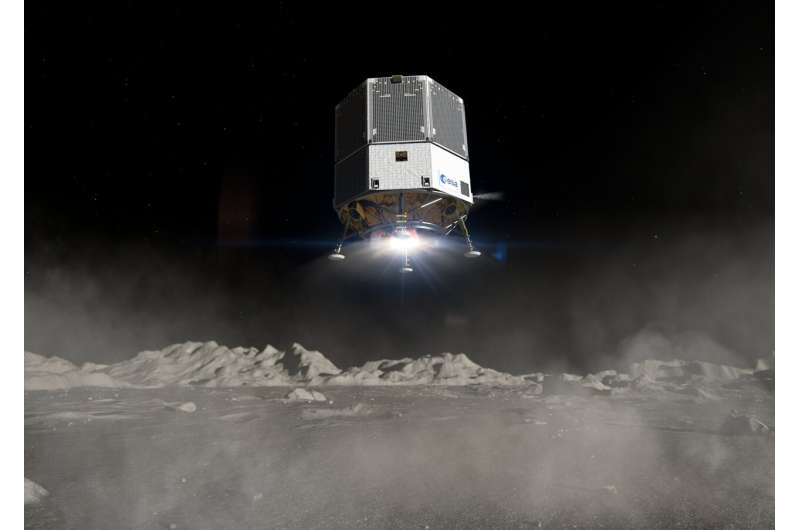
Inside the Columbus science lab | Cosmic Kiss (In German, English subtitles available)
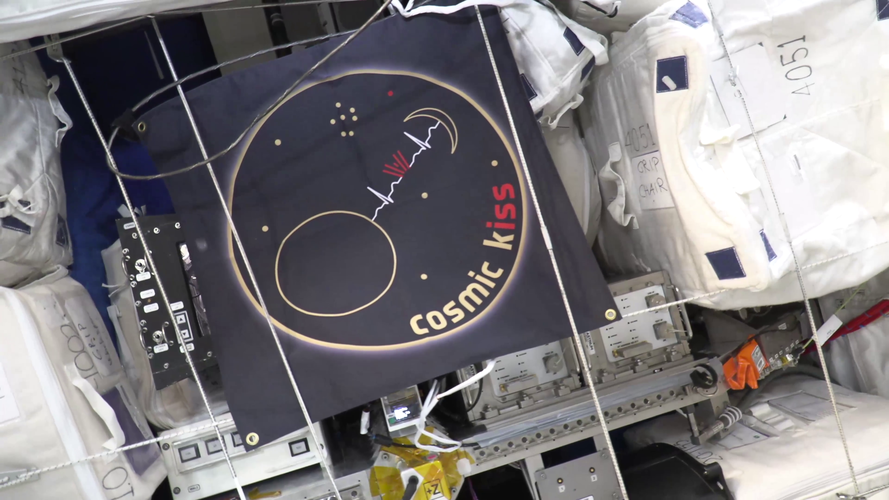 Video:
00:31:09
Video:
00:31:09
Join ESA astronaut Matthias Maurer on a tour of Columbus, Europe’s science laboratory on the International Space Station.
Cosmic Kiss is Matthias’s first mission to the Space Station and the Columbus module is one of his main workplaces. It is also where he sleeps in his crew quarters known as CASA.
Columbus is Europe's largest contribution to the orbital outpost and the first European laboratory for permanent, multidisciplinary research in space. It houses 16 standardised payload cabinets, known as racks, which host laboratory equipment and technical systems. This allows the facility to support research across a wide range of
Filling the GOCE data gap unearths South Pole’s geological past
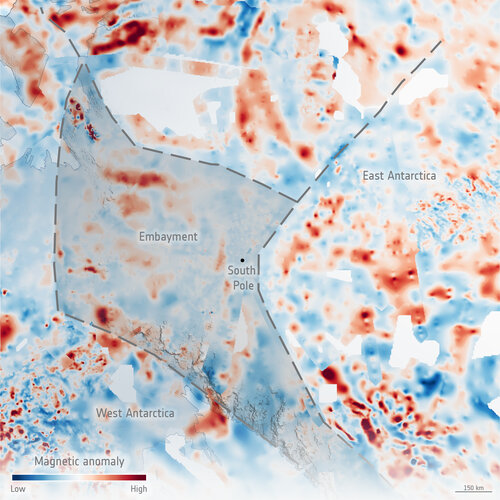
It’s very difficult to know what lies beneath a blanket of kilometres-thick ice, so it is hardly surprising that scientists have long contested the shape and geology of the ancient supercontinent from which East Antarctica formed over a billion years ago. An ESA-funded study can now lay some of this conjecture to rest. Using sensors on aircraft to measure changes in the gravity and magnetic signatures of the different rocks under the ice, scientists have discovered a huge bay the size of the UK formed part of the edge of
There's a big rock stuck inside one of Perseverance's wheels
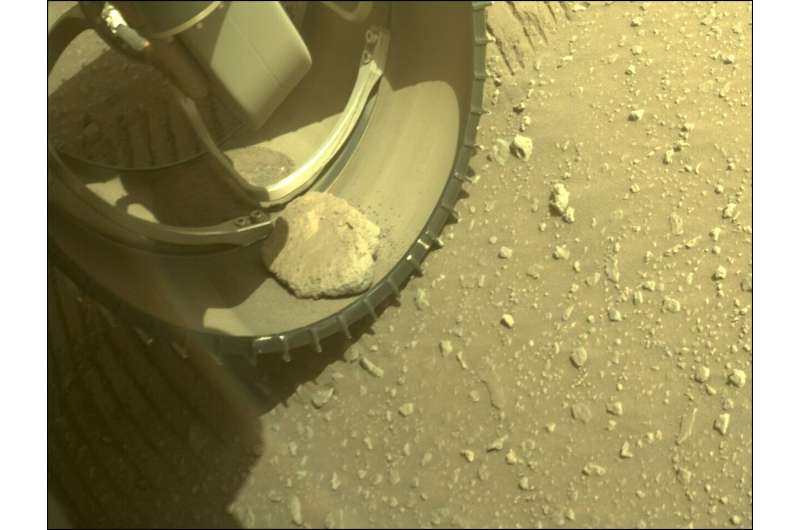
It looks like the Perseverance rover has an unwanted passenger, a rock stuck inside one of its wheels. The image of the stone was selected by public input as the "Image of the Week" for Week 54 (Feb. 20–26, 2022) of the Perseverance mission. Perseverance captured this image on February 25, 2022.
The rover's Front Left Hazard Avoidance Camera A captured the image. When the rover is driving, it makes periodic stops to let the Hazard Cameras survey the immediate surroundings. The Hazard Cameras help evaluate the hazards in front of and behind the rover, like large boulders, deep trenches, or dunes. The cameras create 3D views of the surroundings that help the rover make its own decisions without consulting with the rover team on Earth on every move.
The rock's been there for a few days, based on images from March 2. It's difficult to tell from the picture for sure, but it doesn't appear to be wedged in. Will it fall out during normal operations?
The rock doesn't appear to be causing any damage or hindering the rover's operations.
Team chosen to make first oxygen on the Moon
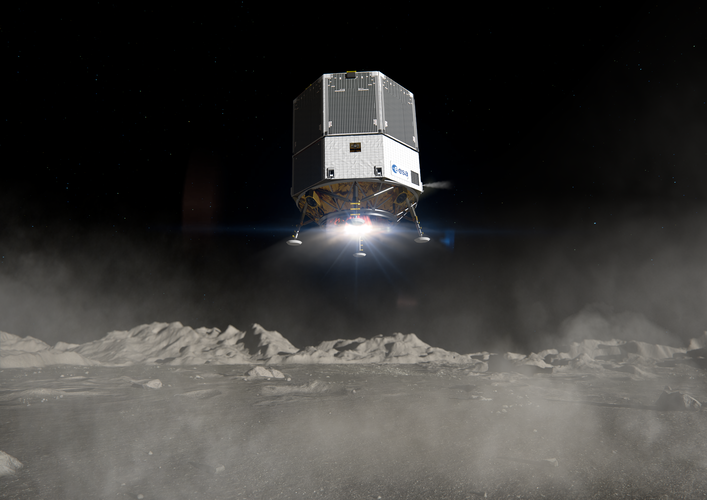
Following a design competition, ESA has selected the industrial team that will design and build the first experimental payload to extract oxygen from the surface of the Moon. The winning consortium, led by Thales Alenia Space in the UK, has been tasked with producing a small piece of equipment that will evaluate the prospect of building larger lunar plants to extract propellant for spacecraft and breathable air for astronauts – as well as metallic raw materials for equipment.
Stonehenge served as an ancient solar calendar - new analysis
 It had long been thought that the famous site of Stonehenge served as an ancient calendar, given its alignment with the solstices. Now, research has identified how it may have worked.
New finds about the stone circle's history, along with analysis of other ancient calendar systems, prompted Professor Timothy Darvill to take a fresh look at Stonehenge. His analysis, published in the journal
It had long been thought that the famous site of Stonehenge served as an ancient calendar, given its alignment with the solstices. Now, research has identified how it may have worked.
New finds about the stone circle's history, along with analysis of other ancient calendar systems, prompted Professor Timothy Darvill to take a fresh look at Stonehenge. His analysis, published in the journal Technology demonstration satellite to be launched soon
 China Aerospace Science and Industry Corp, a major defense contractor, plans to launch a technology demonstration satellite in the coming months, according to a senior researcher overseeing the project.
"The Tiankun 2 satellite is undergoing final tests by our engineers and will be launched by a Long March rocket," said Ma Jie, Party chief of the CASIC Second Academy in Beijing, which is d
China Aerospace Science and Industry Corp, a major defense contractor, plans to launch a technology demonstration satellite in the coming months, according to a senior researcher overseeing the project.
"The Tiankun 2 satellite is undergoing final tests by our engineers and will be launched by a Long March rocket," said Ma Jie, Party chief of the CASIC Second Academy in Beijing, which is d 